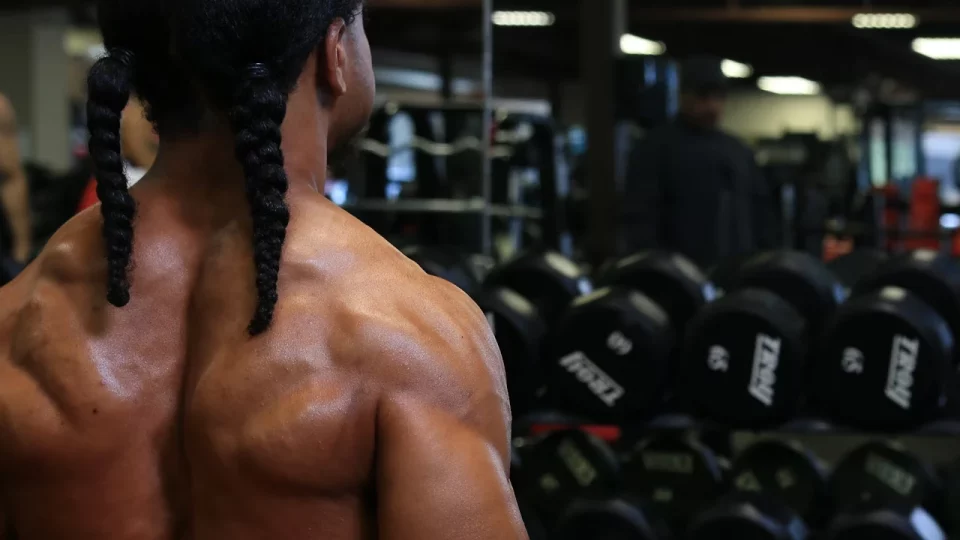One of the most common experiences shared by fitness enthusiasts is the feeling of muscle soreness after a workout. It’s often seen as a badge of honor, a sign of hard work, and even proof that a session was successful. However, the reality is far more nuanced.
Soreness is not the definitive measure of progress, and understanding its causes and implications can lead to smarter, more sustainable training practices.
Table of Contents
What Causes Muscle Soreness?
Muscle soreness, particularly the delayed onset variety (DOMS), occurs after strenuous or unfamiliar physical activity. But what exactly triggers it, and why does it sometimes feel so intense?
The Role of Microtrauma in DOMS
DOMS stems from microscopic damage to muscle fibers, typically caused by eccentric movements—when a muscle lengthens under tension. For instance, lowering a dumbbell during a bicep curl or descending into a squat places significant strain on the muscle, leading to small tears in the tissue.
According to Brad Schoenfeld, Ph.D., professor of exercise science, this damage isn’t harmful; in fact, it’s part of the body’s natural adaptation process. When the muscle repairs itself, it becomes stronger and more resilient, preparing to handle similar stress in the future. This cycle is key to building strength and endurance.
Novelty and Intensity as Soreness Triggers
Soreness is often most pronounced after performing new exercises or increasing the intensity or volume of a workout. John Rusin, DPT, notes that introducing an unfamiliar movement or challenging your muscles in a new way can “insult tissues” that aren’t accustomed to such stress. This might involve switching from standard squats to Bulgarian split squats or pushing through a deeper range of motion.
However, not everyone experiences soreness the same way. Genetics, fitness levels, and individual recovery capacities all play a role in how sore someone feels after a workout.
Is Muscle Soreness a Good Indicator of Progress?
While some level of soreness can indicate muscle engagement and adaptation, it’s not the gold standard for measuring progress. Both Schoenfeld and Rusin caution against equating soreness with success in the gym.
The Link Between DOMS and Muscle Growth
Studies show a mild correlation between DOMS and muscle hypertrophy (growth), but this doesn’t mean soreness is necessary for progress. Many seasoned lifters find that as they become more experienced and their bodies adapt to training routines, soreness decreases, even as strength and muscle mass continue to increase.
Rusin emphasizes the dangers of chasing soreness as a goal. Overtraining to the point of debilitating soreness can impair recovery, limit future workouts, and increase the risk of injury. “If you’re too sore to move properly,” he explains, “your ability to train effectively is compromised.”
Better Metrics for Progress
Rather than focusing on soreness, consider these signs of improvement:
- Increased strength: You can lift heavier weights or complete more reps with the same weight.
- Enhanced endurance: You can sustain longer or more intense sessions.
- Consistency: You’re able to train regularly without excessive fatigue or discomfort.
- Improved energy and confidence: You feel stronger and more capable in your daily life.
How Much Soreness Is Normal?
Soreness exists on a spectrum, from a mild twinge to severe discomfort. Understanding what’s normal—and when it’s a cause for concern—is essential for safe and effective training.
Mild to Moderate Soreness
On a scale of 1 to 10, mild soreness (1–3) is generally harmless. It may feel slightly tender when touched or when moving the affected muscle, but it won’t interfere with daily activities. This level of soreness is common after a moderate workout or when introducing a new exercise.
Severe Soreness
Higher levels of soreness (4–7) can impact movement and daily tasks. You might find it challenging to walk down stairs, sit down, or lift objects without discomfort. While this level of soreness isn’t inherently dangerous, it’s a sign that you may have pushed too hard or need to adjust your recovery strategies.
When to Be Concerned
Soreness that reaches the upper end of the scale (8–10) could indicate more serious issues, such as mild rhabdomyolysis—a condition where muscle breakdown releases harmful proteins into the bloodstream. Symptoms include swelling, severe pain, and dark urine. If you experience these signs, seek medical attention immediately.
Strategies for Managing and Preventing Excessive Soreness
While some soreness is inevitable, there are steps you can take to minimize discomfort and maintain consistent progress in your training.
Start Gradually
If you’re returning to the gym after a break or trying a new workout, avoid pushing to muscle failure in your first sessions. Build intensity and volume gradually to give your muscles time to adapt.
Warm Up and Cool Down
Preparation and recovery are crucial. A dynamic warm-up helps increase blood flow to the muscles, reducing the risk of injury and soreness. Post-workout, spend at least five minutes stretching and focusing on deep, controlled breathing to aid recovery.
Consistency Over Novelty
While it’s tempting to try new exercises frequently, sticking to a structured program for 4–6 weeks allows your body to adapt and reduces excessive soreness. Over time, you can progressively overload the muscles by increasing weight or reps.
Listen to Your Body
Pay attention to how your body feels during and after workouts. If you notice soreness creeping into the severe range or lasting longer than 72 hours, scale back your intensity or take a rest day to avoid compounding the issue.
